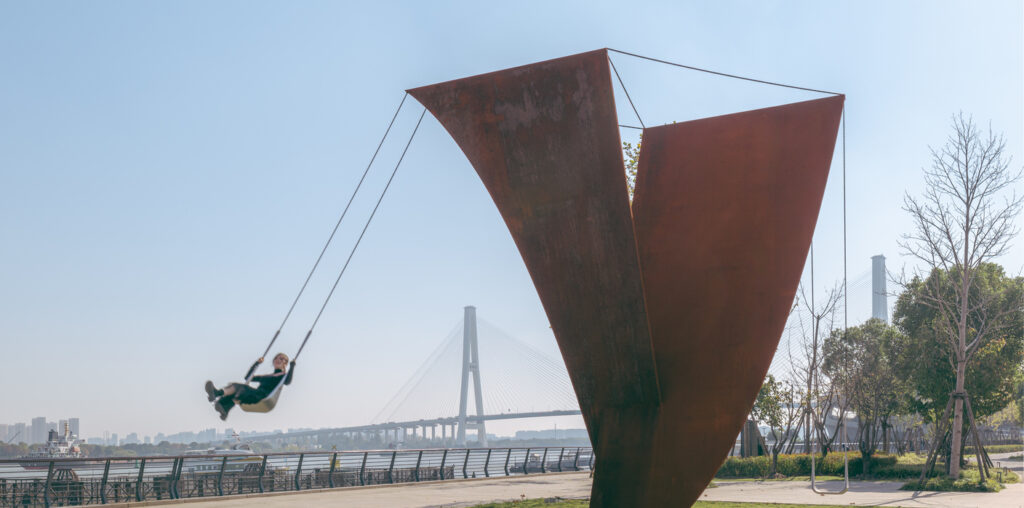
In the productivity-driven dynamics of contemporary cities, playful interventions in public spaces offer an innovative way to reclaim urban environments. These interventions encourage new ways of thinking and acting, temporarily breaking the monotony of everyday life and redefining the concept of play. Once confined to childhood and separate from daily activities, play has begun to intertwine with routine paths, becoming an integral part of urban life even outside traditional leisure times. In this way, reintroducing the swing—the most iconic children’s toy—becomes particularly significant. As a symbol of childhood, pleasure, and joy, the swing contrasts sharply with the rigid appropriations of most public spaces, inviting a more relaxed and playful engagement with the urban environment.
Incorporating playfulness into urban environments is not a new concept. Interventions like the slide at the train station in Utrecht have long aimed to transform monotonous cities into more inviting spaces filled with unique situations and interactions. Among these interventions, swings have gained prominence, serving not only as elements of artistic experimentation that challenge materiality and structure but also as catalysts for social interaction. They play a poetic role in subverting traditional norms and fostering collective engagement, ultimately enhancing connections among people in public spaces.

Swing interventions, proposed by architects, artists, designers, and even advertising agents, come from several initiatives. Regardless of their origin, their impact is always significant: by challenging the routines that define daily life, swings create moments of pause, connection, and reflection. This not only enriches the urban landscape but also cultivates a deeper emotional relationship with the city, redefining how we engage with our environment and connect with one another.
Discover 9 public swings that bring fun into everyday life.
Salvage Swings City of Dreams Pavilion / Somewhere Studio

Ring of Swings / IND [Inter.National.Design] + Studio ID Eddy

Play with Nature / DL Atelier

SWING / Moradavaga

Grupo Finca in Cuba

Dome Next Door Installation / Toms kampars + Hori_zonte + Jurgis Gečys + Antonella Amesberger

Get Swinging in Boston on these Glowing LED Hoops

Triumfalnaya Square / Buromoscow

21 balanços – Daily Tous Les Jours




![Ring of Swings / IND [Inter.National.Design] + Studio ID Eddy. © IND [Inter.National.Design] & Studio ID Eddy Urban Revitalization Through Motion: 9 Public Swings That Invite Play - Image 3 of 13](https://images.adsttc.com/media/images/671a/cfd4/abb6/a21a/5b77/e7ad/thumb_jpg/reinventando-o-espaco-urbano-9-balancos-publicos-que-convidam-a-brincar_8.jpg?1729810396)

